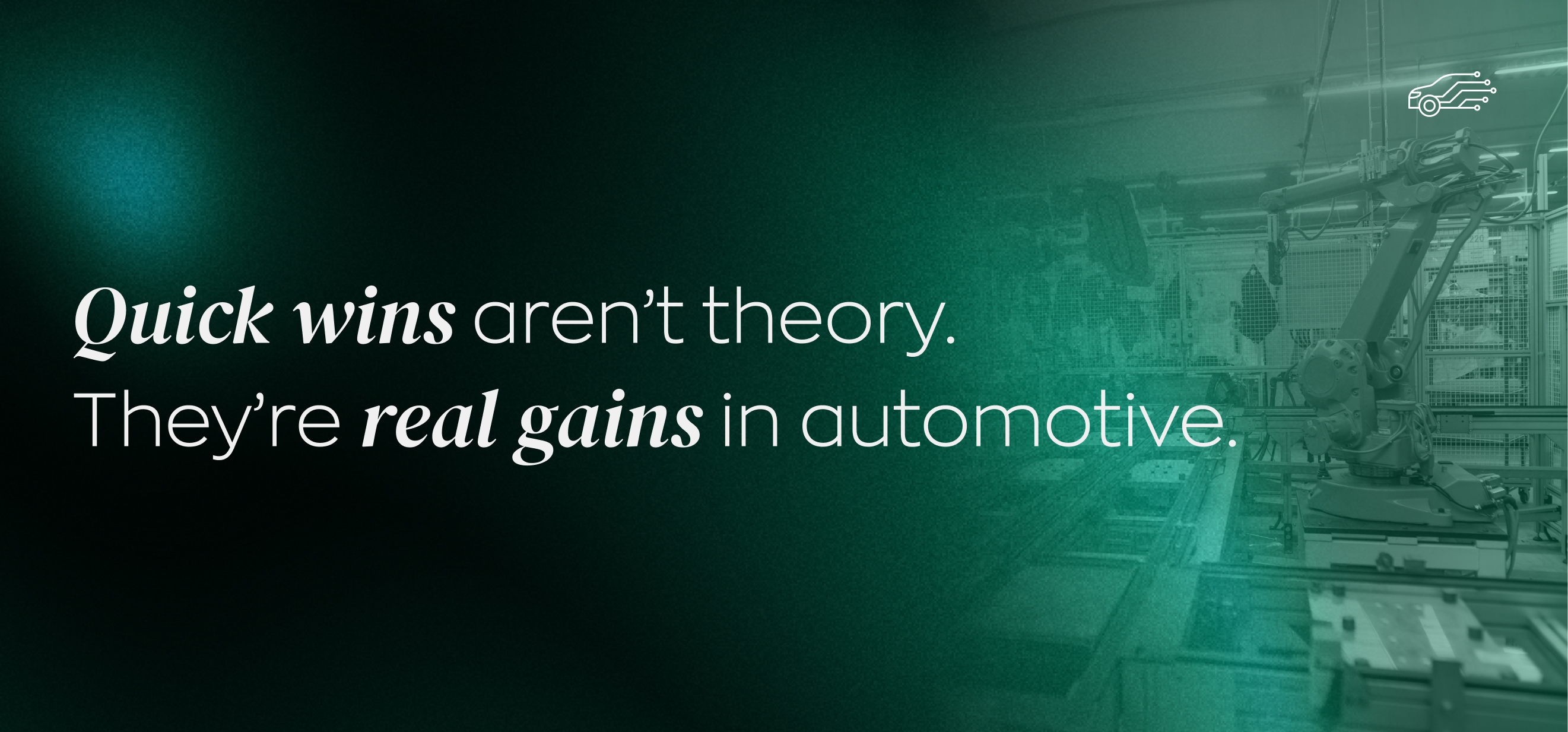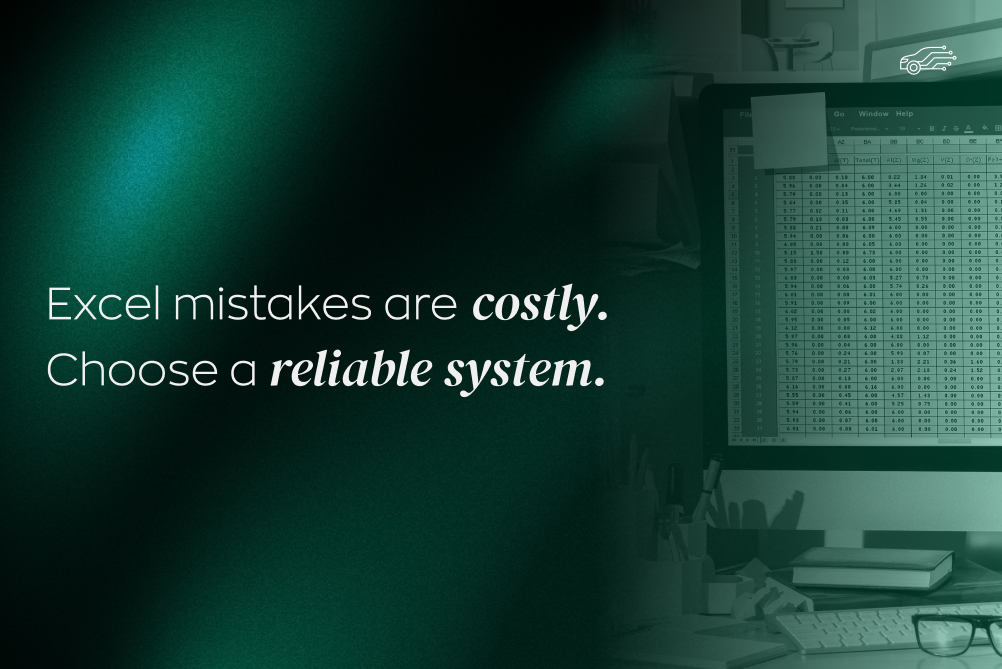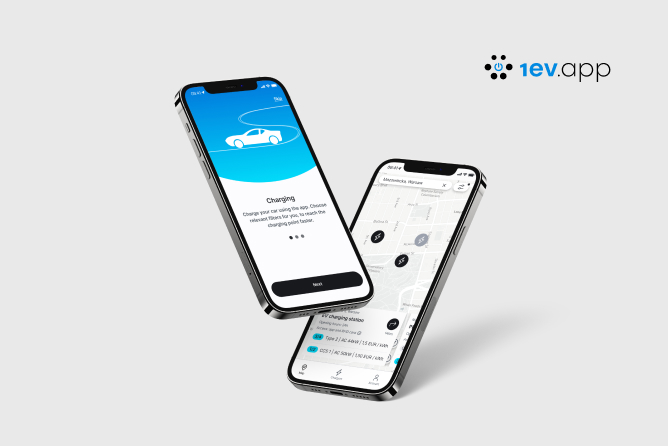Pressure for maximum efficiency, rising costs, and ongoing challenges with finding skilled workers - that’s the daily reality of the automotive industry. In this environment, finding a competitive advantage becomes crucial. Fortunately, automation stopped being a futuristic concept available only to global giants a long time ago. Today, it’s a practical, accessible tool that can become your strategic ally.
We understand that implementing new technologies can feel intimidating, so let’s look at some simple and quick first steps you can take to start seeing measurable benefits almost immediately.
The most commonly automated tasks in automotive – quick wins
Wondering what can be implemented right away, without months of complex projects? Shift into first gear on your digital transformation journey and start with the tasks that deliver the fastest ROI. Here’s a list of proven “quick wins”:
- Assembly of simple components: Repetitive tasks such as screwing bolts, applying seals, or assembling small subcomponents are ideal for collaborative robots (cobots).
- Quality control: Vision systems can inspect assembly accuracy, detect surface defects, and verify component presence with unmatched precision and speed - ensuring 100% quality without fatigue.
- Packaging and palletizing: Preparing finished products for shipment is an easily automatable process that frees up employees for more complex tasks and minimizes the risk of injury.
- Internal transport (intralogistics): Autonomous vehicles (AGV/AMR) can efficiently transport components between production cells and the warehouse, optimizing material flow and reducing downtime.
- Machine tending: Loading and unloading CNC machines, presses, or injection molders are repetitive and often risky tasks. Robots can handle them 24/7, ensuring uninterrupted production.
- Warehouse management: Automated storage and retrieval systems help maximize space utilization and accelerate order picking processes.
Technologies and tools available today - where to start
The market offers a wide range of scalable and cost-effective solutions. You don’t need to build a fully automated factory from scratch. Does it pay off? Absolutely - if you start wisely. Below are technologies with a low entry barrier:
- Collaborative robots (cobots): Think of them as team members who don’t take breaks, don’t get sick, and maintain consistent precision. They’re flexible, easy to program, and safe to work alongside humans.
- 2D/3D vision systems: Modern cameras and software act as your production’s eyes. Investing in a vision system quickly pays off by eliminating costly errors and product returns.
- Simple assembly lines: Modular automation stations can be implemented step by step, allowing you to expand processes without stopping production.
- Manufacturing Execution Systems (MES): The digital brain of your operations — it collects real-time data, monitors performance, and allows for quick responses to any issues.
Benefits of automation - quick results for your company
What exactly can you gain within just a few weeks of implementation? The benefits go far beyond cost reduction. Automation is above all a smart investment in growth.
Imagine a Tier 1 component supplier that reduced product complaints to nearly zero and shortened inspection time per part by 70% thanks to automated quality control. Another company, after implementing a cobot for press tending, increased output by 30%, enabling three-shift production without hiring additional staff.
These are not abstract examples - they’re real outcomes. Automation brings tangible results: reduced human error, improved repeatability and quality, enhanced workplace safety, and - most importantly - it frees up your team’s potential so they can focus on creative and problem-solving tasks.
Implementation examples - who has already benefited from automation in automotive?
Automation is no longer reserved for large corporations. More and more small and medium-sized manufacturers are adopting automation to gain a competitive edge.
And yes, it works. Across Poland, there are dozens of examples of companies in metalworking, plastics processing, and electronics assembly that successfully implemented robotic machine tending and automated vision inspection systems. As a result, they’ve not only increased production capacity but also met growing quality requirements and secured new contracts.
Challenges and barriers - how to overcome them and implement automation fast
When considering automation, it’s natural to have questions or doubts: “What if we can’t afford it?”, “Will our staff handle it?” These are valid concerns - but each has a practical solution.
- Initial costs: Instead of a single large investment, consider leasing options or phased implementation, starting with one workstation.
- Employee resistance: Communication is key. Present automation as a tool that makes their work easier, not one that replaces them. Provide training and involve your team in the process.
- Lack of technical knowledge: You don’t have to be an expert. Partner with an experienced integrator who will conduct an audit, recommend the best solutions, and handle the entire process.
Remember - every long journey begins with a single step. The most important thing is to break the inertia and take action.
Summary and next steps - how to start automating today
Automation in the automotive industry is no longer optional - it’s a necessity for staying competitive. Fortunately, starting this journey has never been easier. The key is to focus on processes that deliver fast, measurable results and create a foundation for further growth.
Where to start?
- Identify bottlenecks – conduct a process audit to locate areas where you lose the most time, money, or quality.
- Talk to an expert – schedule a free consultation with an automation integrator who will help you assess potential and select the right technologies.
- Start with a small pilot project – automating a single workstation will allow you to see tangible benefits and gain valuable experience.
Don’t wait for your competitors to get ahead. Take the first step and discover how much your company can gain through automation. Begin your transformation today!










.jpg)
.jpg)


.jpg)
.jpg)


.jpg)
.jpg)
.jpg)
.jpg)
.jpg)
.jpg)

.jpg)
.jpg)
.jpg)
.jpg)
.jpg)
.jpg)
.jpg)
.jpg)
.jpg)
.jpg)






.jpg)
.jpg)
.jpg)

.jpg)

.jpg)


.jpg)
.jpg)

.jpg)
.jpg)

.jpg)

.jpg)
.jpg)
.jpg)

.jpg)
.webp)

.webp)


.jpg)









.webp)


.webp)

























